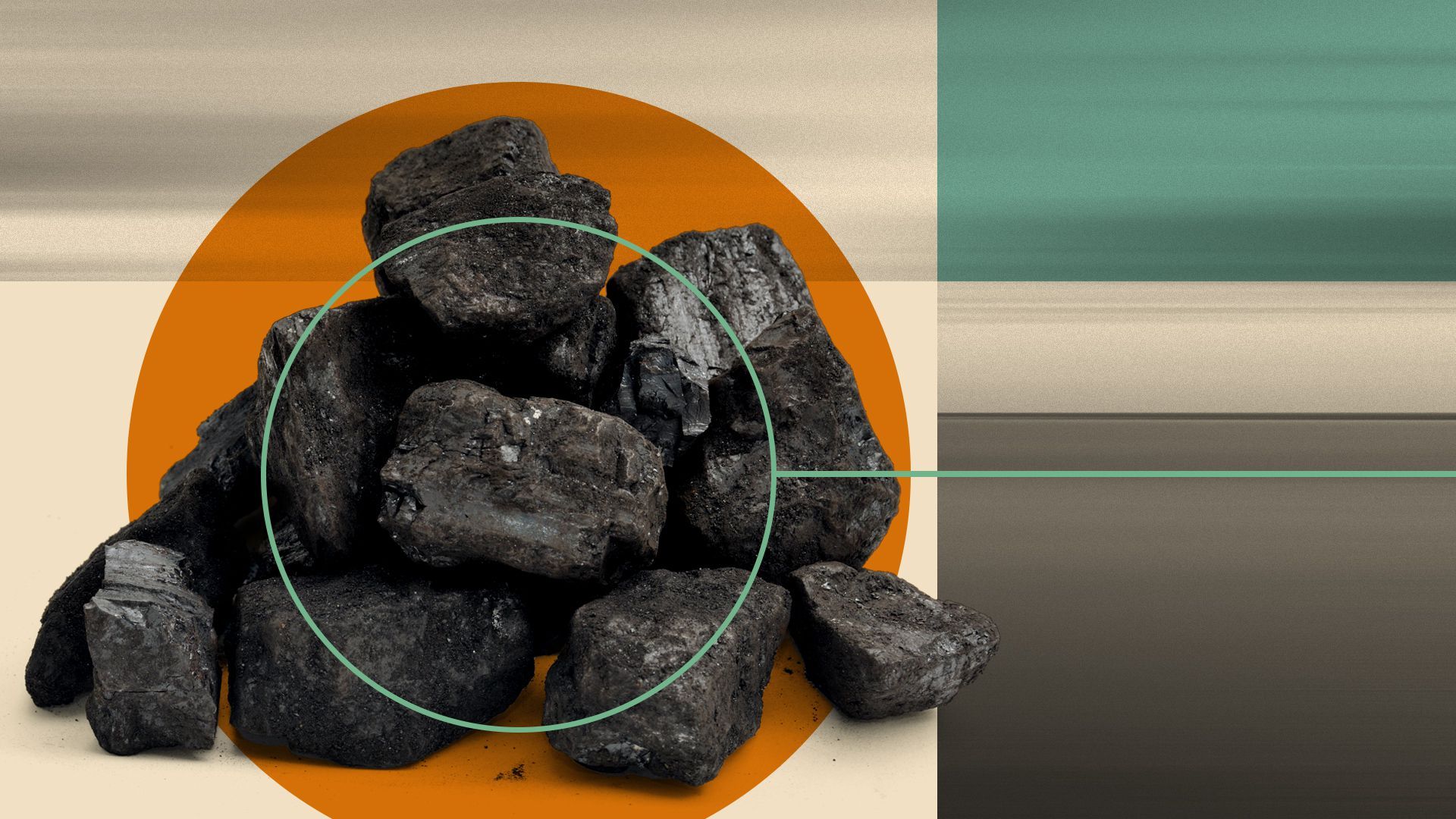| |
| |
| |
| |
| |
| Axios Generate |
| By Ben Geman and Andrew Freedman · Nov 21, 2022 |
| 🥞 Good morning after a wild weekend (from a climate policy standpoint anyway). 🏎️ Today's newsletter has a quick Smart Brevity count of 1,106 words, 4.5 minutes. 🎶 On this date in 1980 Steely Dan released "Gaucho," the sublime outcome of a long and troubled production that provides today's intro tune... |
| |
| |
| 1 big thing: Making sense of a historic and messy deal |
 |
|
| Illustration: Gabriella Turrisi/Axios |
| |
| The COP27 summit that ended early yesterday broke new ground in climate diplomacy but could not move past longstanding energy disputes even as planet-warming emissions keep piling up, Andrew and Ben write. Catch up fast: The United Nations talks in Sharm el-Sheikh, Egypt, produced a groundbreaking deal to create a fund for wealthy industrial countries to compensate poor nations for the ravages of climate change. Between the lines: Here are some key conclusions and things to watch as the dust settles on the chaotic talks. 🌀 The "loss and damage" fund is historic — but vague. It's a huge win for climate justice after a decadeslong struggle by the most vulnerable nations, including small island states, that are facing encroaching seas, stronger storms and other harms. - The agreement establishes a committee to determine key details of how such a fund will work, which would report back at COP28 next year. It's unclear how much money will eventually be mobilized.
- "[I]t may be years before those countries see a dollar from the new fund. Political will is needed to shorten the timeframe for when countries actually receive money," the Environmental Defense Fund's Angela Churie Kallhauge said in a statement.
🇺🇸 The new climate law doesn't close U.S. credibility gaps. President Biden, in his COP27 appearance, said the new domestic investments show leadership and will help spread emissions-cutting tech worldwide. - But it is unlikely a split Congress will approve big funding increases for new foreign climate aid.
⏸️ It went with the status quo on emissions. Diplomats from dozens of countries left frustrated that the deal doesn't explicitly target oil and gas or press harder overall for stronger emissions cuts. - Many sought to insert a phase-out or phase-down of "fossil fuels" into the text, rather than only singling out coal.
- Those efforts faced "staunch resistance from countries including Saudi Arabia and Russia," the FT reports, naming two huge oil producers.
- That said, it maintains the goal of holding global temperature rise to 1.5°C, which would implicitly require cuts in all fossil fuels, and expands on last year's summit by name-checking renewables.
💵 International finance faces intense scrutiny. The deal has a lengthy call for better aligning the policies and funding from multilateral development banks — like the World Bank — around fighting climate change. ✋ COP27 faced big questions on inclusion. A number of activists alleged fossil fuel lobbyists had too much influence and that other voices were muted. |
    |
| |
| |
| 2. A central contradiction in the COP27 outcome |
 |
|
| Illustration: Annelise Capossela/Axios |
| |
| The provisions of the COP27 agreement have an important inconsistency, Andrew and Ben write. The big picture: On the one hand, the agreement finally recognizes that climate disasters are growing more serious, and are already beyond the coping ability of many developing countries. - Yet the text also did not ratchet up the level of ambition for securing more emissions cuts on a faster timeline than was contained in the Glasgow Accord last year.
- Attempts to refer to phasing out all fossil fuels ran into a brick wall of major oil producers, and the final text does not mention having emissions peak by 2025.
Between the lines: In other words, by staying the course on emissions cuts, the COP27 decision ensures that more loss and damage will occur. What they're saying: "It does not address the yawning gap between climate science, and our climate policies," said Frans Timmermans, vice president of the European Commission, of the agreement's climate mitigation section. Yes, but: It's far from clear that adding more forceful language would produce steeper and faster emissions cuts, since national policies, the pace of technology development, and other factors are at play. |
    |
| |
| |
| 3. A look at carbon emissions legacies |
 Data: Global Carbon Project; Chart: Alice Feng/Axios The chart above provides context for the fraught negotiations around "loss and damage," Ben writes. Why it matters: It shows the industrial powers that have created the largest share of historical emissions that are warming the planet. |
    |
| |
| |
| A message from Axios |
| Your daily dose of climate deals |
| |
 |
| |
| Stay informed and ahead of the latest major deals happening in the climate industry. What you'll get: Unlock premium newsletters, scoops and events through Axios Pro: Deals. Simplify your day. |
| |
| |
| 4. 🌍 Global voices on COP27 |
| 🇵🇰 "The establishment of loss & damage fund at the UN climate summit is the first pivotal step towards the goal of climate justice. It is up to the transitional committee to build on the historic development." — Pakistani PM Shehbaz Sharif, whose nation faced record flooding this year. 💬 "This is the first time in many years that our nations do not come out of a COP empty-handed." — Madeleine Diouf Sarr, chair of the Least Developed Countries organization, in a wider statement on COP27 that also criticized shortfalls in the deal. 👎 "The Egyptian presidency produced a text that clearly protects oil and gas petro-states and the fossil fuel industries. This trend cannot continue in the UAE next year." — Laurence Tubiana, a former French climate diplomat who helped craft the Paris Agreement, via the Guardian. - The other side: Saudi negotiators emphasized focusing on overall emissions, rather than singling out specific sources.
|
    |
| |
| |
| 5. Charted: The upward march of global EV choices |
 Reproduced from BloombergNEF; Chart: Axios Visuals The number of electric cars available is on a steady upward march, but choices are far wider in some places than others, Ben writes. Zoom in: As of midyear, there were 318 fully electric and 145 plug-in hybrids on the market, per a report last week from the research firm BloombergNEF. - China has by far the most options, followed by Europe, but growth has been strong in the U.S.
- There were 84 models available in the U.S. in mid-2022, up from 59 at the end of 2020.
|
    |
| |
| |
| 6. 🛢️Petro notes: crude prices and LNG |
| 📉 Crude prices are sliding again amid economic headwinds and the prospect that China's COVID policies will be a brake on demand, Ben writes. - Where it stands: The U.S. benchmark WTI is trading under $80 per barrel this morning, the lowest since late September, while Brent is down too.
- What they're saying: "We're seeing bleak economic prospects all around the globe which continues to weigh on oil prices and if interest rates keep rising as they are, expectations will likely deteriorate further," OANDA analyst Craig Erlam said in a note.
🤝 "QatarEnergy has signed a 27-year deal to supply China's Sinopec with liquefied natural gas (LNG), the longest such LNG agreement so far as volatile markets drive buyers to seek long-term deals." (Reuters) ⚠️ "Japan warns that global competition for liquefied natural gas is set to intensify over the next three years due to an underinvestment in supply." (Bloomberg) |
    |
| |
| |
| A message from Axios |
| Your daily dose of climate deals |
| |
 |
| |
| Stay informed and ahead of the latest major deals happening in the climate industry. What you'll get: Unlock premium newsletters, scoops and events through Axios Pro: Deals. Simplify your day. |
| |
| 📬 Did a friend send you this newsletter? Welcome, please sign up. 🙏Thanks to Mickey Meece and David Nather for edits to today's newsletter. We'll see you back here tomorrow! |
 | | Your personal policy analyst is here. | | |









No comments:
Post a Comment